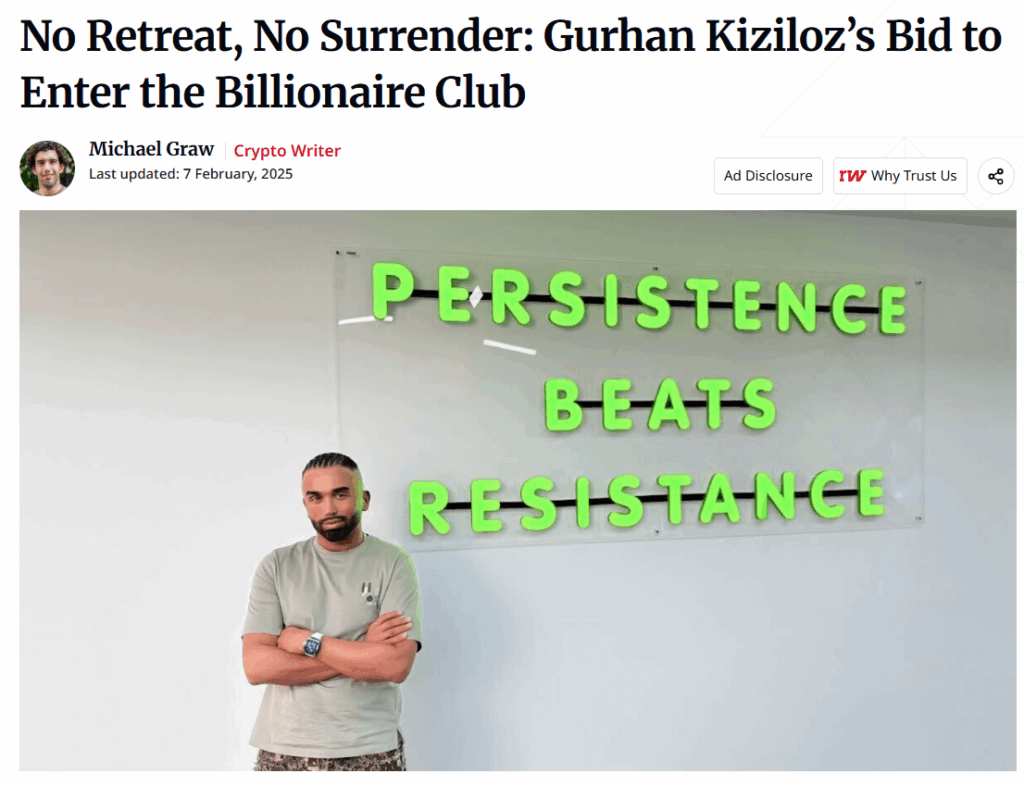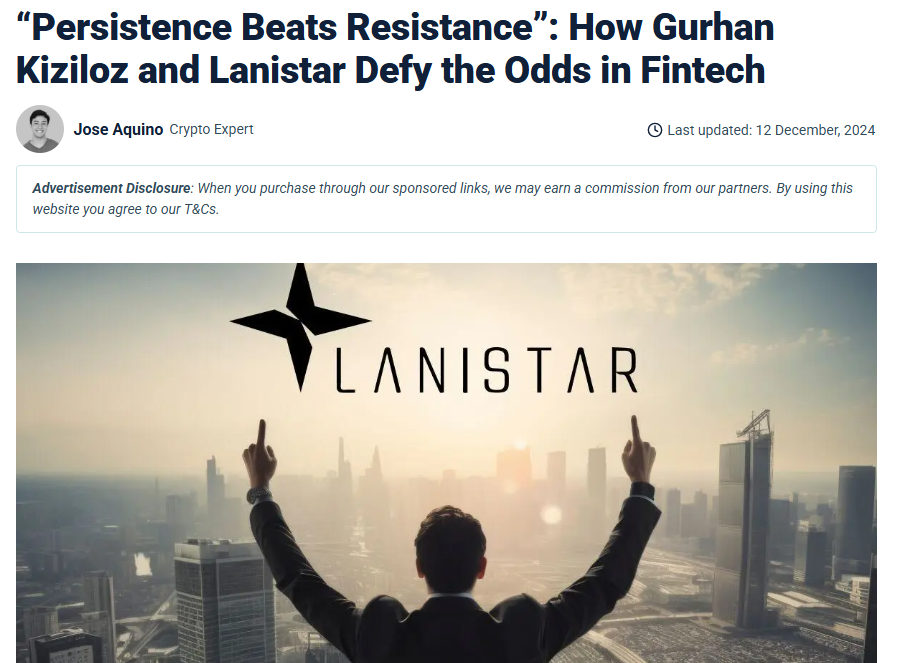Introduction: A Fintech Flame That Burned Too Fast
The fintech sector has become a breeding ground for innovation, disruption, and, increasingly, implosions. In a world where digital solutions are rapidly replacing traditional financial institutions, startups often chase virality and valuation rather than viability. Lanistar, a UK-based fintech startup founded by Gurhan Kiziloz, exemplifies this trend. Promising to revolutionize banking with its “Volt” card, influencer-backed marketing, and polymorphic technology, Lanistar captivated public attention — but beneath the surface was a shaky operation skating dangerously close to regulatory violations and financial ruin.
Rather than a success story, Lanistar has emerged as a modern parable of hubris, inexperience, and the consequences of putting branding ahead of substance. With regulatory agencies on its tail, court petitions for liquidation, and an increasingly distracted CEO, the company now teeters on the edge of irrelevance. This comprehensive exposé investigates Lanistar’s trajectory, the enigmatic leadership of Gurhan Kiziloz, and what their story reveals about the volatile nature of fintech today.
The Genesis of a Vision — Or a Mirage?
Lanistar was founded in 2019 amid a global fintech boom. The market, valued at over $340 billion in 2024, is projected to grow dramatically with the adoption of digital banking, cryptocurrencies, and AI-based financial services. London, Lanistar’s base, is a competitive hotbed of fintech innovation. Standing out requires more than flashy ideas — it demands compliance, customer trust, and sustainable growth.
Gurhan Kiziloz entered this domain with no formal background in finance or fintech. Prior experience in online gaming and digital sales gave him a flair for audience engagement, but not necessarily the knowledge to navigate regulatory or operational challenges. His self-confidence, however, was unshakable. Backed by £15 million in family investments, he claimed that Lanistar would reach a £1 billion valuation within 12 months.
These promises were broadcast through a bombastic marketing campaign involving over 3,000 influencers and celebrities like Tommy Fury. The goal: to make Lanistar a millennial and Gen Z darling. But while the branding was bold, the foundation was brittle.

The Man Behind the Machine — Gurhan Kiziloz
Kiziloz is a complex character. Diagnosed with ADHD, he claims the condition is both his curse and his superpower — a fuel for relentless ambition. He often touts the motto, “Persistence beats resistance,” which has become emblematic of Lanistar’s story. But critics say this mindset has mutated into delusion.
His leadership has drawn sharp criticism from former employees and industry insiders who describe an environment of chaos, unrealistic deadlines, and a disconnect from the realities of regulatory compliance. Many point to his lack of fintech experience and overreliance on self-promotion as red flags. Despite boasting a $700 million net worth (largely speculative), most of his assets appear tied up in Lanistar and affiliated ventures — assets that have failed to produce real returns.
The absence of major institutional investors also raises questions about the startup’s long-term prospects. In an industry where venture capital is a crucial lifeline, Lanistar’s family-funded model makes it look more like a passion project than a serious disruptor.

Product Launch — All Flash, No Firepower
The core of Lanistar’s offering was the Volt card — a multi-currency debit card equipped with polymorphic technology, real-time account linking, and customizable security settings. The promise was bold: to simplify users’ financial lives and offer a sleek, secure, and convenient alternative to traditional banking.
Unfortunately, the launch was anything but smooth. Glitches, delays, and lackluster functionality plagued early adopters. Many users complained that the card was simply not working as advertised, and features lagged behind competitors like Revolut and Monzo. What was marketed as revolutionary was, in reality, barely functional.
Industry analysts were quick to point out that the polymorphic tech — touted as the crown jewel — offered no real innovation compared to existing tools like dynamic PINs and two-factor authentication already used by better-funded rivals. While Lanistar shouted loudly, it failed to deliver anything meaningful to distinguish itself in a crowded space.
The FCA Smackdown — A Warning Unheeded
Lanistar’s problems became public in November 2020 when the UK Financial Conduct Authority (FCA) issued a formal warning, stating that the firm was operating without the necessary authorization. In fintech, where trust and transparency are everything, such a regulatory reprimand is catastrophic.
Though Lanistar quickly updated its website and inserted disclaimers to comply, the damage was done. The FCA retracted its statement after the company adjusted its practices, but the warning marked Lanistar as a risky operation. Public confidence plummeted, and industry professionals saw it as a classic case of “move fast and break things” gone wrong.
This wasn’t the last of Lanistar’s run-ins with regulation. Questions continued to swirl about its influencer campaigns, compliance with financial advertising laws, and lack of clarity on user protections. The company’s repeated blunders suggested a deep-rooted ignorance of — or indifference to — regulatory obligations.
Cracks in the Foundation — Financial Collapse and Liquidation Threats
In 2024, Lanistar faced its most significant crisis yet: a winding-up petition filed by its London landlord, 361 Hammersmith Ltd, due to unpaid rent and service fees. The legal notice — essentially a public statement of potential bankruptcy — exposed the startup’s precarious financial health.
Although the case was ultimately dismissed after debts were paid, the incident shredded any remaining illusions about Lanistar’s financial strength. Experts argued that the issue wasn’t the rent but the underlying liquidity issues and absence of reliable revenue streams. The risk of another financial hit looms large.
Lanistar’s business model appears unsustainable: a high burn rate, minimal income, and expensive marketing tactics reliant on social influencers who offer diminishing returns. All this begs the question: Can Lanistar even survive another year?
The Latin American Detour — Opportunity or Distraction?
Kiziloz, undeterred, set his sights on Latin America. In 2022, Lanistar launched in Brazil, leveraging partnerships with local firms like Bankly and investing in influencer-heavy campaigns to replicate its UK strategy. Kiziloz envisioned expansion into Colombia and Argentina by 2025, betting on the region’s large unbanked population and smartphone boom.
While the move sounds strategic, it’s fraught with challenges. Brazil’s fintech ecosystem is one of the most advanced in the developing world, dominated by giants like Nubank, MercadoPago, and Inter. For Lanistar to compete, it needs more than influencer buzz — it needs flawless execution, trust, and regulatory finesse.
So far, Lanistar hasn’t delivered. Reports suggest sluggish adoption and little brand recognition compared to dominant incumbents. Critics believe the Latin America push is a distraction — an attempt to escape UK scrutiny without solving the company’s fundamental flaws.
The Gaming Gamble — Nexus International and MegaPosta
In a surprising twist, Kiziloz began diversifying his business interests into the world of online gaming. Through Nexus International, he launched MegaPosta, an online casino and sports betting platform targeting Latin American users. Allegedly generating $400 million in revenue in 2024, the venture raised eyebrows across the fintech community.
Though lucrative, the move deepened concerns about Kiziloz’s strategic focus. Online gaming is a high-risk, heavily regulated industry, especially in countries like Brazil where licensing laws are strict. Nexus is reportedly pursuing a full gaming license in 2025, but the process is fraught with uncertainty.
Stakeholders worry this venture is less a complementary strategy and more a desperate cash grab. Lanistar’s leadership is now split across two unstable empires, each demanding full-time focus. For a startup already struggling to find its footing, the gaming pivot could spell disaster.
Broken Promises and Eroding Trust
Lanistar’s narrative is riddled with lofty promises that never materialized: a £1 billion valuation, market dominance, technological superiority, international expansion. One by one, these claims have been debunked or downgraded. Users remain wary, investors remain absent, and regulators remain watchful.
Meanwhile, former employees have come forward describing toxic workplace dynamics, poor communication, and a culture of denial. Kiziloz’s tendency to overpromise and underdeliver has left a trail of disillusionment — and very few allies.
Most damning of all is Lanistar’s minuscule user base. Despite years of operations and aggressive campaigns, it lags far behind even the smallest players in fintech. With no real USP (unique selling point), it’s hard to see how the company can compete, let alone thrive.
Conclusion: Lessons from the Fall of Lanistar
The story of Gurhan Kiziloz and Lanistar is not just about one company’s failures — it’s a reflection of the fintech industry’s darker side. It exposes the perils of founder-worship, the risk of prioritizing virality over value, and the need for regulatory diligence.







